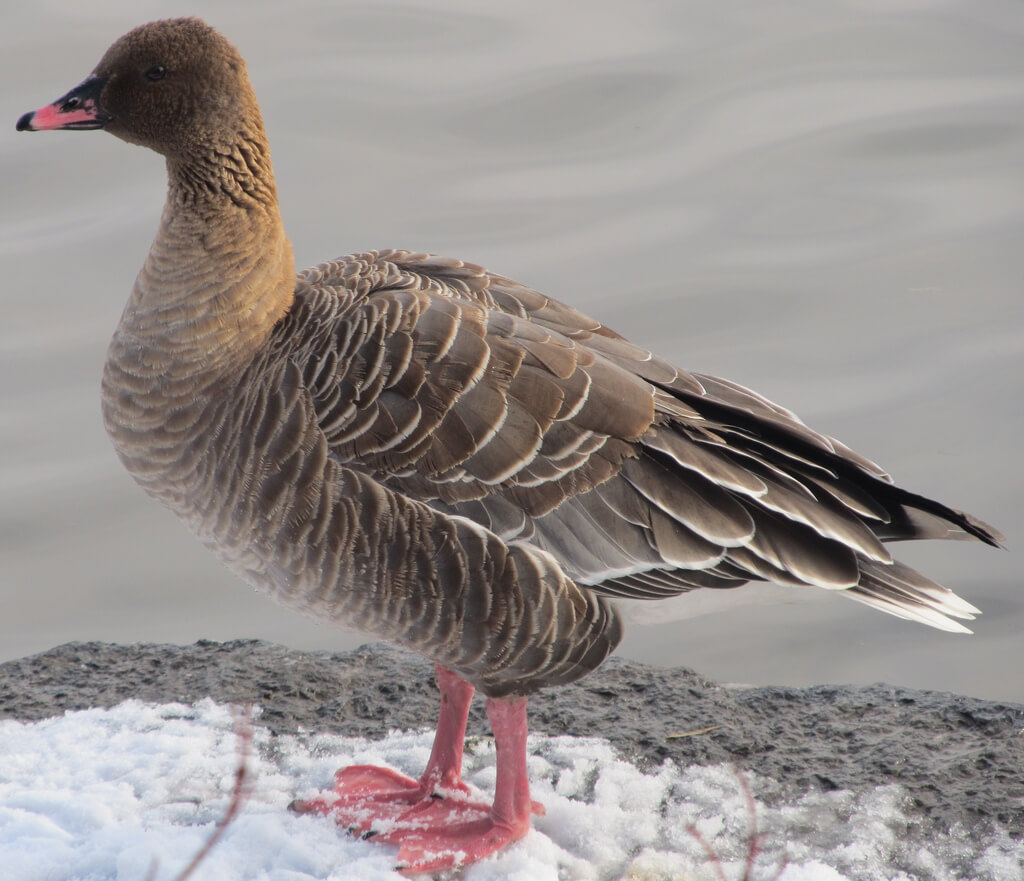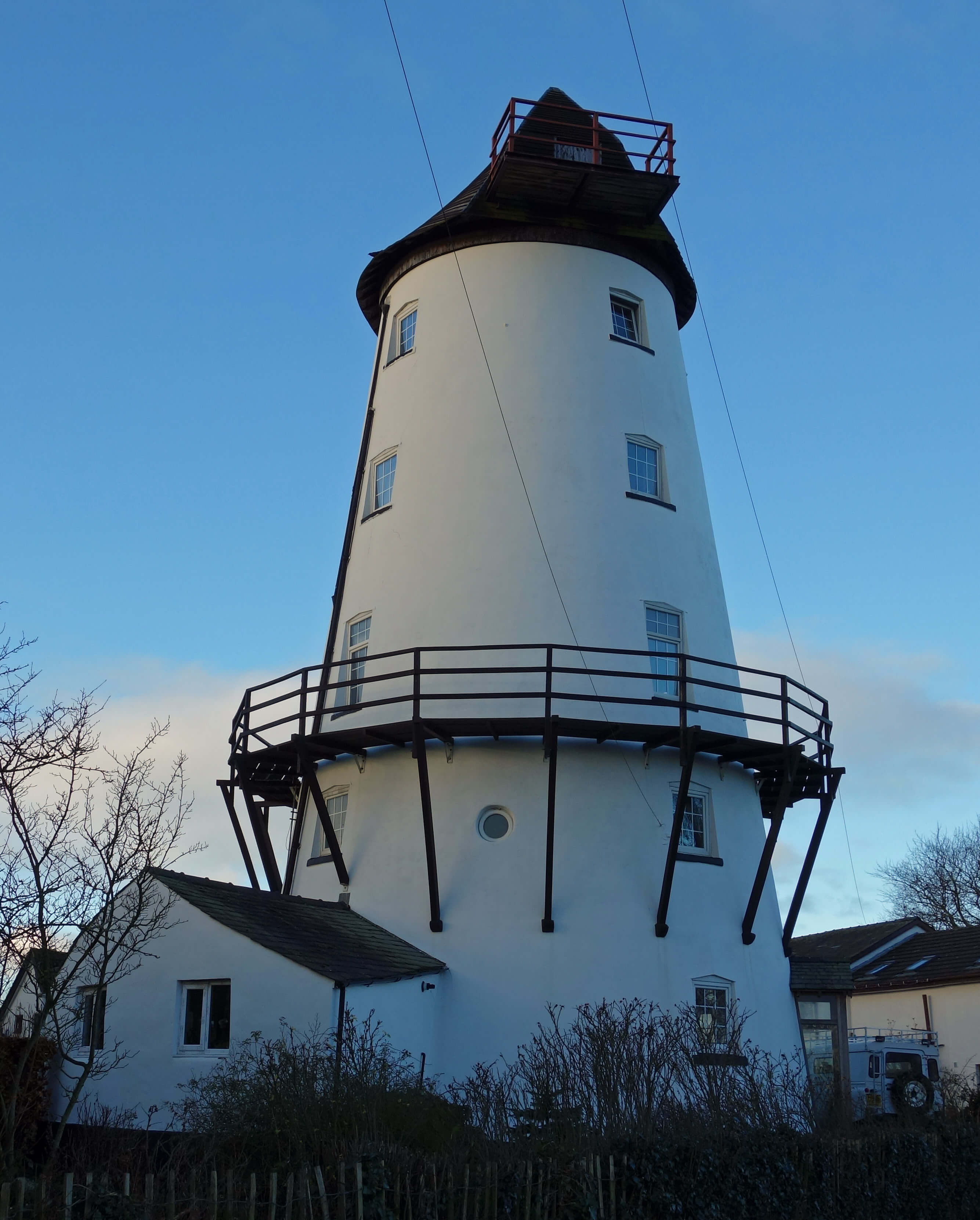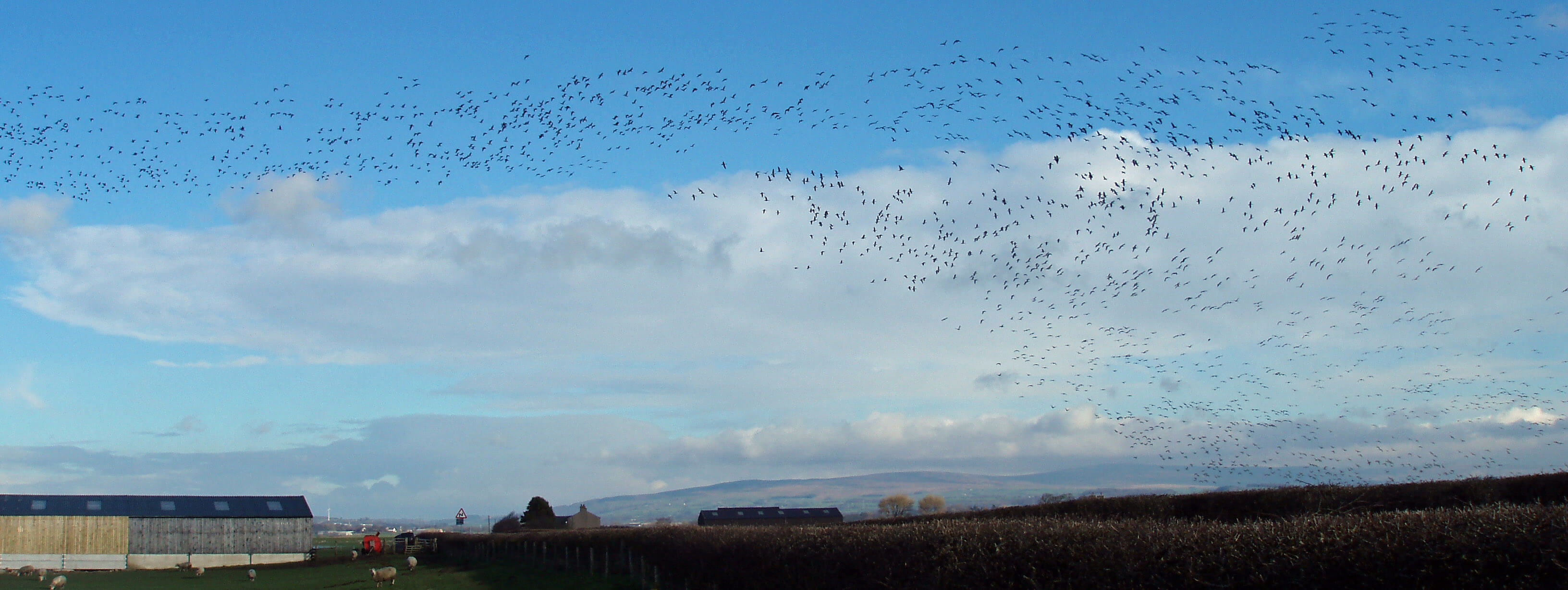
Home
Preamble
Index
Areas
Map
References
Me
Drakkar
Saunterings: Walking in North-West England
Saunterings is a set of reflections based upon walks around the counties of Cumbria, Lancashire and
North Yorkshire in North-West England
(as defined in the Preamble).
Here is a list of all Saunterings so far.
If you'd like to give a comment, correction or update (all are very welcome) or to
be notified by email when a new item is posted - please send an email to johnselfdrakkar@gmail.com.
112. Walking around Pilling with Pink Feet

 Yes, I know: ‘pink feet’ is wrong. That was just to gain your attention. Birders call the pink-footed goose the ‘pink foot’. If there’s more than one, it’s still the pink foot, as in “The pink foot are back”, which is fair enough, as it is short for ‘pink-footed geese’.
Yes, I know: ‘pink feet’ is wrong. That was just to gain your attention. Birders call the pink-footed goose the ‘pink foot’. If there’s more than one, it’s still the pink foot, as in “The pink foot are back”, which is fair enough, as it is short for ‘pink-footed geese’.
From the embankment at Lane Ends we could see fresh snow on the Lake District hills. There were none of the
usual birders about – but the sun had only just risen. A chilly wind caused us not to linger, so we walked to Pilling,
the largest village of the flat Fylde. It is built mainly of red brick but has two non-red buildings protruding upward.
The St John the Baptist Church with steeple was built in 1887 by the ubiquitous Paley & Austin. In
Sauntering 69
I commented that Paley & Austin had a virtual monopoly hereabouts with church building and had at Finsthwaite gone
beyond their usual style. That is even more the case at Pilling where, apart from including the steeple, they
used pink stones to embellish the upper parts. This church replaced the smaller one nearby, where there is a sun-dial
commemorating George Holden (1723-1793), vicar of Pilling Church, who is said to have devised the
tide tables (although this is a convoluted tale
that I tried to unravel in
The Land of the Lune,
Chapter 15). The other prominent building is a converted windmill, which was built in 1808 to a height of 22 metres, the highest in Fylde, but had become derelict by the 1940s.
Floral displays, bold for December, enlivened the Pilling streets. May I politely ask that Pilling takes as
much care with its footpath signs? We followed one that led to an old pinfold and then evaporated amongst gardens.
Returning to Broadfleet Bridge, a group of about thirty pink foot flew over, low and noisy. These were what we
had really come to see. Pink-footed geese from Iceland over-winter in their thousands in the north Fylde region,
taking advantage of the Wyre-Lune Sanctuary Nature Reserve. They form the V-shaped skeins of our winter
skies, with sometimes large numbers of geese passing over with celebratory honks.
They are rather dainty birds, for geese.
Having noticed that this section of the Pilling Embankment was still open (it closes from December 26th to Good Friday), we walked back along it. At Lane Ends one birder was now at his station – but as we neared he up-tripodded and retreated to his car. It was too cold – or there weren’t enough birds. I agree with him on the latter point. The last time I came here I was treated to a spectacular display of thousands of pink-footed geese, swirling about, occasionally forming arrows or lines, breaking up and re-forming, cacophonous, eventually moving out over the bay.
After a coffee break we moved back to Cocker Bridge, from where we hoped to see more action in the skies. We walked on a muddy path to Patty’s Farm and on to the Black Knights Parachute Centre. A plane took off. We didn’t wait to see if it disgorged a parachutist. That wasn’t what we had come to see – this was:

Pink-footed geese (as seen on the previous visit)
Date: December 24th 2020
Start: SD415493, car park outside Lane Ends amenity area (Map: 296)
Route: (a) N – viewing area – S, SW – Broadfleet Bridge – W, S – footpath – N,
E – Broadfleet Bridge – N, E on embankment – Lane Ends; (b) SD453512, by Cocker Bridge – N – Pattys Farm – S –
Cocker Bridge
Distance: 4 miles; Ascent: 5 metres
Home
Preamble
Index
Areas
Map
References
Me
Drakkar
© John Self, Drakkar Press, 2018-

Top photo: The western Howgills from Dillicar;
Bottom photo: Blencathra from Great Mell Fell



 Yes, I know: ‘pink feet’ is wrong. That was just to gain your attention. Birders call the pink-footed goose the ‘pink foot’. If there’s more than one, it’s still the pink foot, as in “The pink foot are back”, which is fair enough, as it is short for ‘pink-footed geese’.
Yes, I know: ‘pink feet’ is wrong. That was just to gain your attention. Birders call the pink-footed goose the ‘pink foot’. If there’s more than one, it’s still the pink foot, as in “The pink foot are back”, which is fair enough, as it is short for ‘pink-footed geese’.

